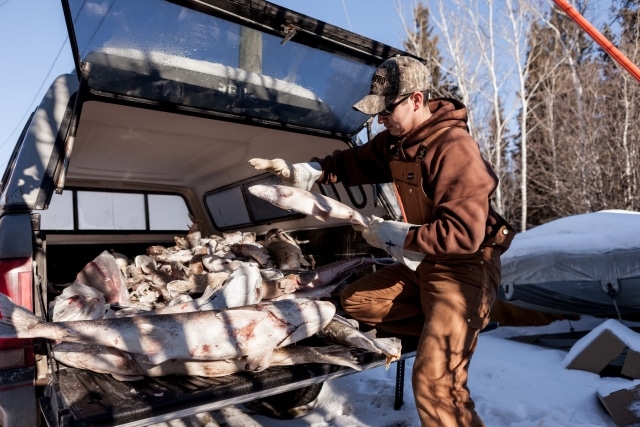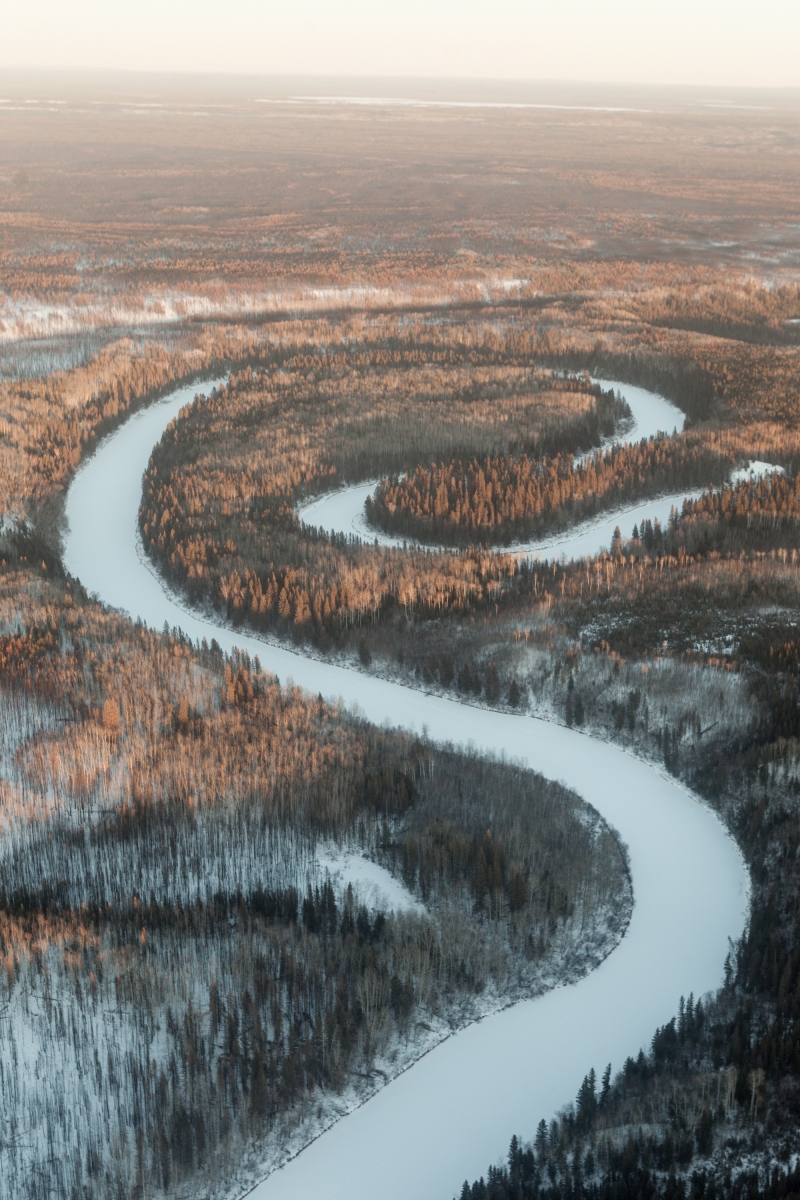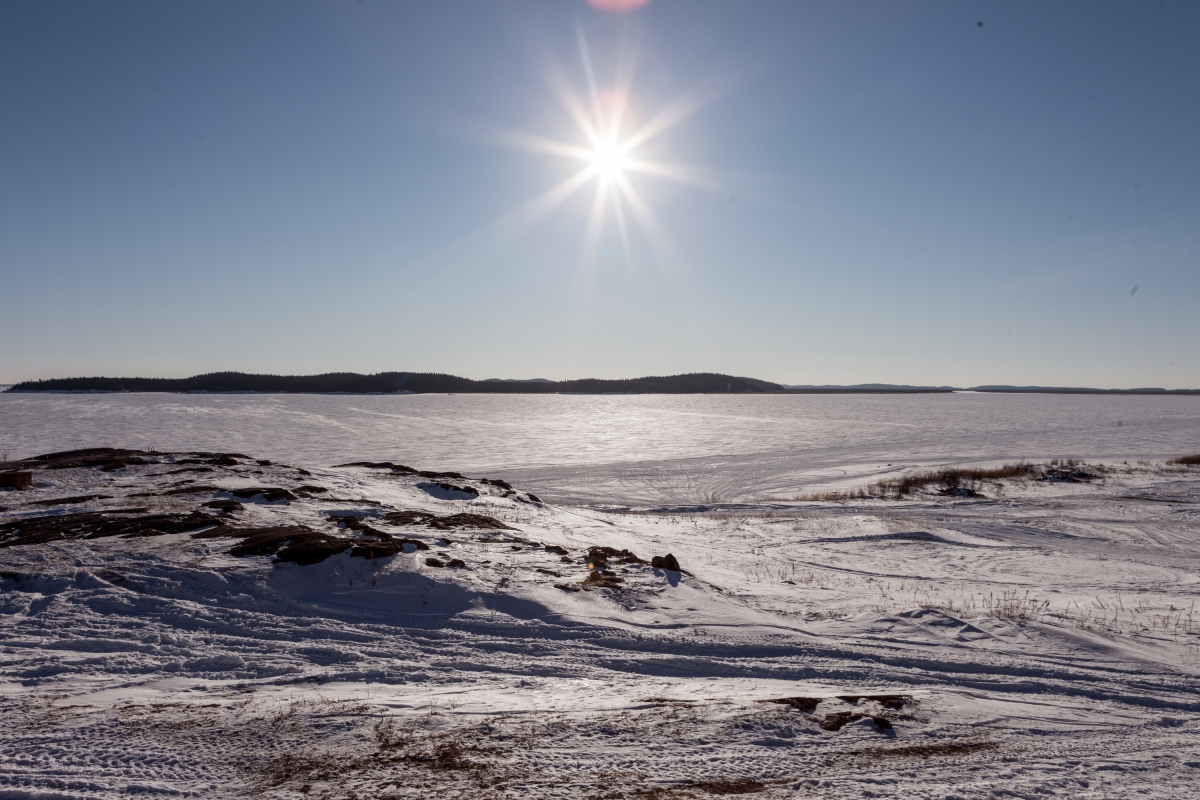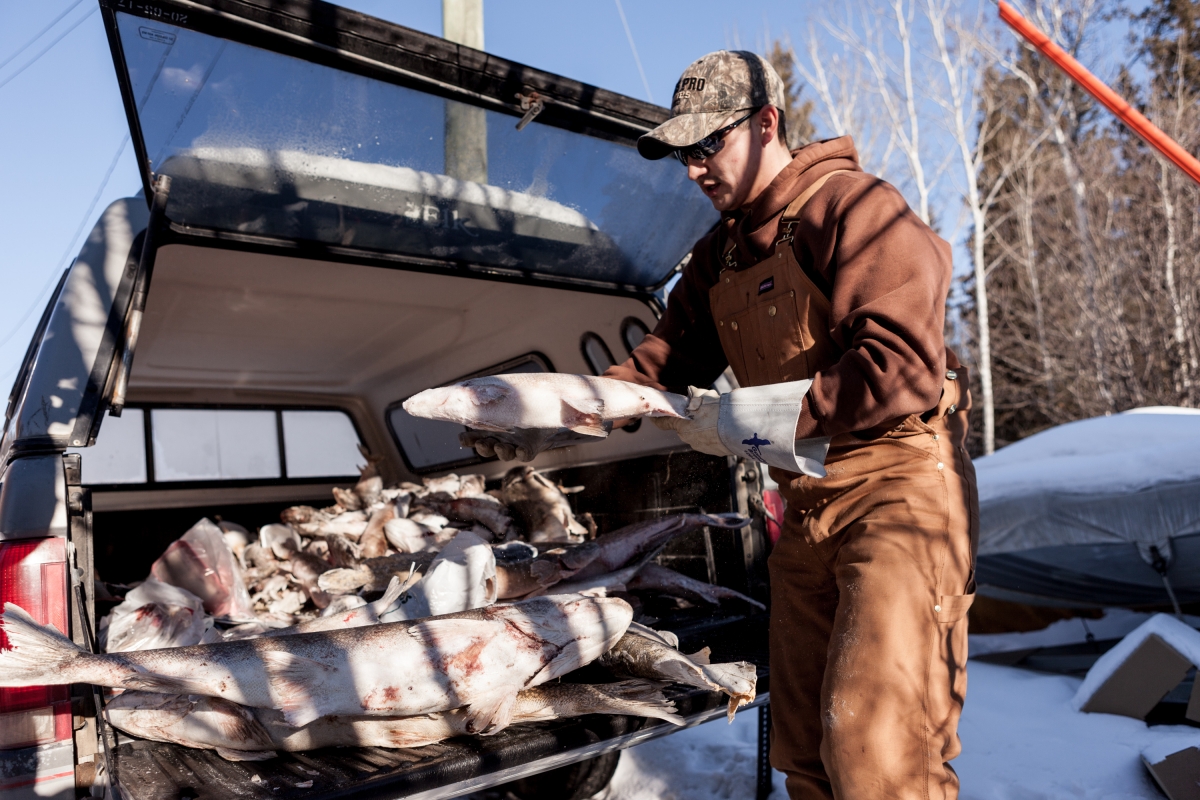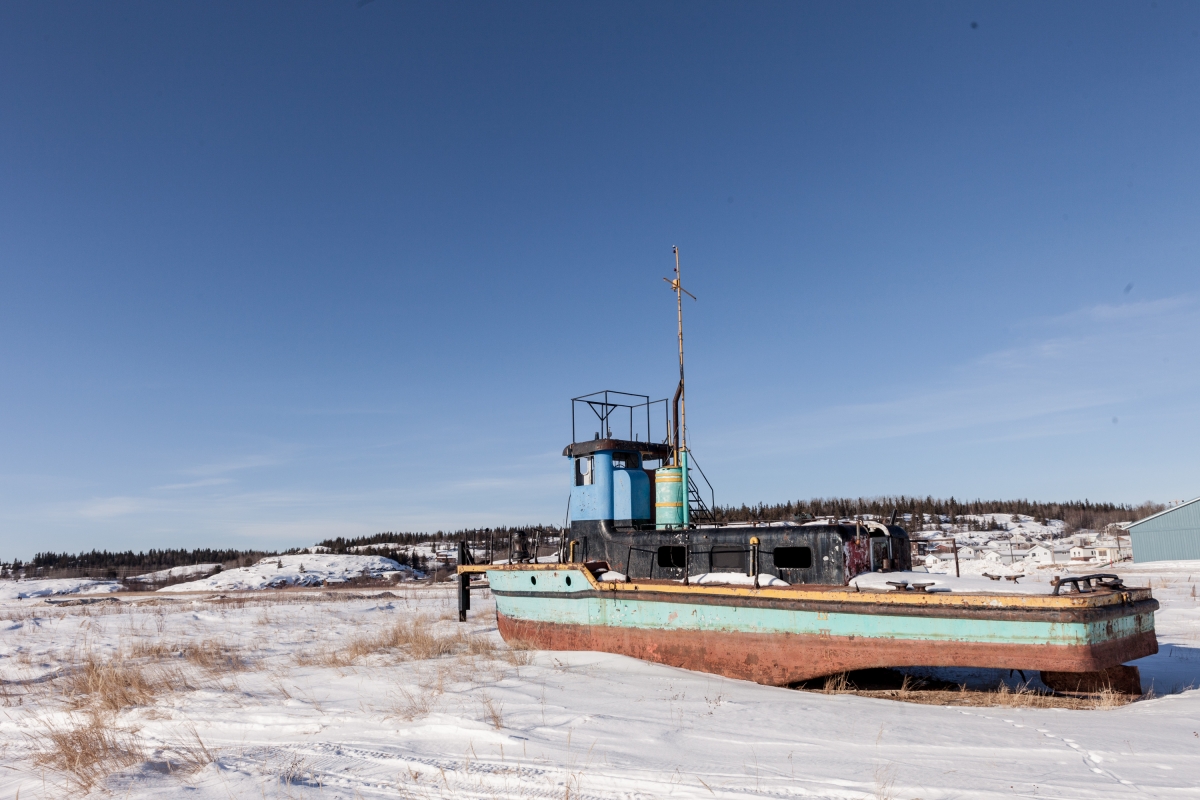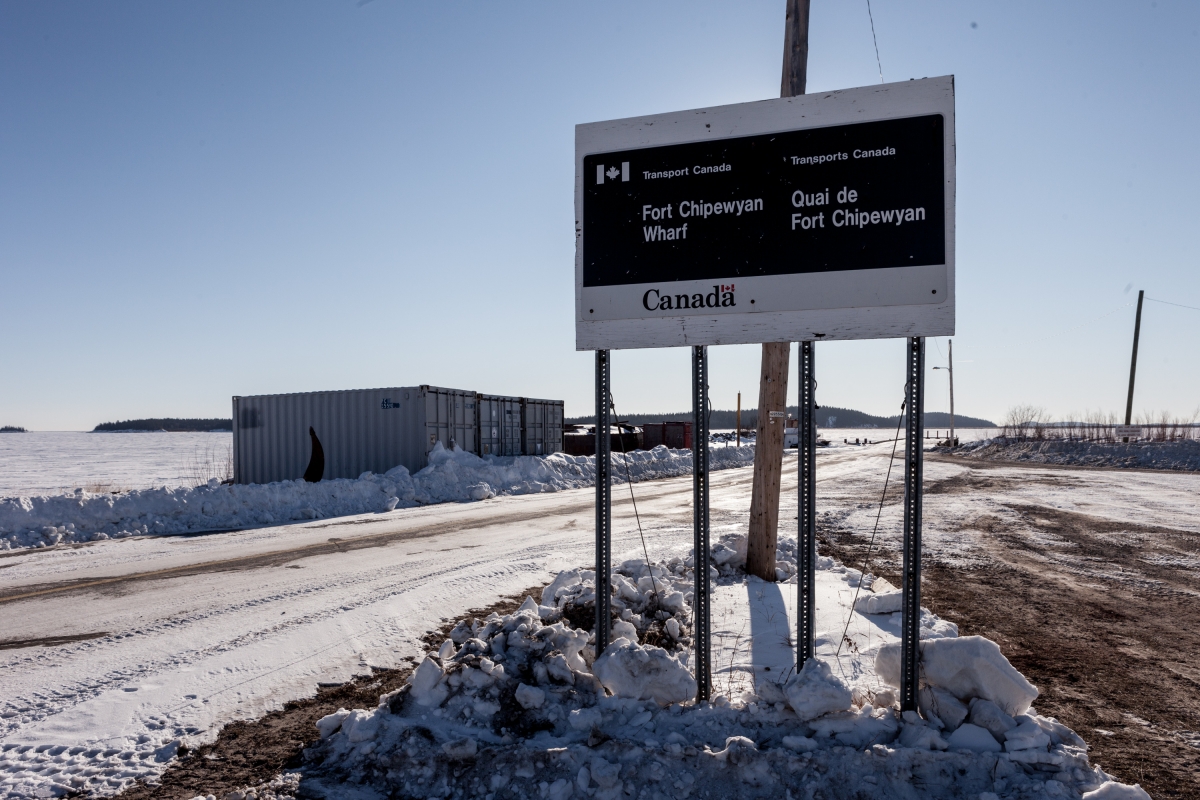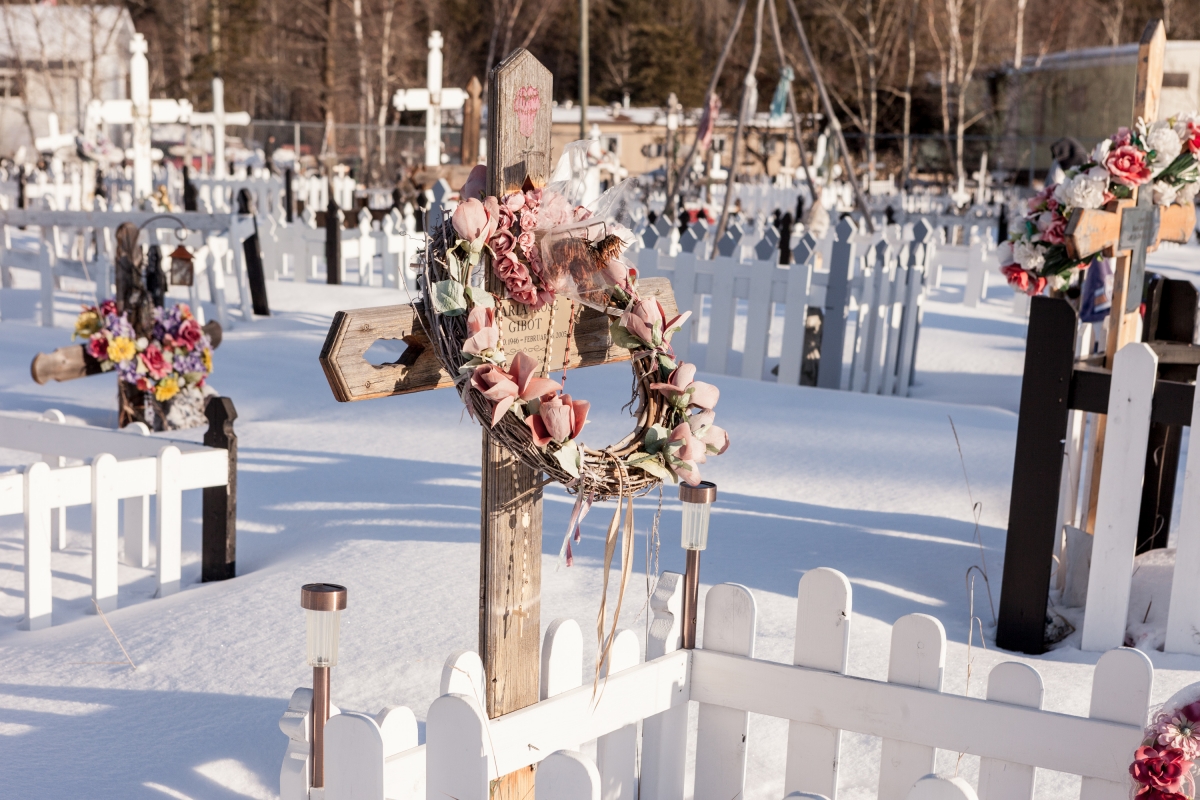This is the second installment of a three-part series on Dr. John O’Connor, the family physician to first identify higher-than-average cancer rates and rare forms of cancer in communities downstream of the Alberta oilsands.
Part 2: Deformed Fish, Dying Muskrats Cause Doctor To Sound Alarm
When Dr. John O’Connor arrived in Fort Chipewyan in 2000, it took him a little while to get familiar with the population.
The town was a bit larger than his previous post of Fort MacKay, with a population of around 1,000 at that time. Locals had few options when it came to medical care. Their town was 300 kilometres north of Fort McMurray and accessible only by plane in the summer or by ice road for a few of the colder months.
O’Connor recognized it was a close-knit community and yet hard to get a foothold in.
“You had to be trusted to gain their respect, I guess,” he said.
Most doctors hadn’t established a continuous practice up there, O’Connor said, so the community hadn’t received continuous care by the same medical expert for many years.
“What they were looking for was one pair of eyes, one pair of hands. Consistency,” he recounts.
“That was one of the reasons why I was approached to provide service. So that made it easier to get to know people and for them to get to know me.”
O’Connor immediately began poring over patient files, piecing together what a series of seasonal doctors had left behind. Patients there felt there was no continuity between what rotating doctors would say about their symptoms.
Yet, to O’Connor, the files coupled with his continuous care of individuals began to paint one alarming picture.
“What had been documented before from the patients was quite concerning. I got to know people then and people come in for various symptoms, from the day-to-day bread and butter type of practice to more serious stuff. I began to see that there are issues in Fort Chip that I shouldn’t be seeing at a practice even in Fort McMurray, with 4,000 to 5,000 patients. I wasn’t seeing anything like the pathology I was seeing in Fort Chip.”
What O’Connor discovered was a strikingly high concentration of cancer in the small community. The files were actually well organized, O’Connor said, and he began to add to them, ordering new tests and gaining new patients.
“The numbers just started to mount up,” he said. “It just didn’t make sense.”
O’Connor began reaching out to other doctors and specialists, asking them if they also thought the pathologies in Fort Chip were notable. Even at that early time, O’Connor said, “there was a general agreement” that the cancer rates and rates of other illnesses were unusually high. O’Connor cautioned, though, that those were the early days: “of course, at that point, that was very early – early times of trying to figure out why.”
“And I guess, in many respects we’re still trying to figure that out, because no studies have ever been done,” he said.
“The thing that was really striking was that Fort Chip is way off the beaten track,” O’Connor said. “It’s right on the edge of the Canadian shield, in a gorgeous location. The population — less so now — but back then, probably 80 per cent of the community in one way or another subsisted off the land.”
Located in the muskeg of Canada’s expansive boreal forest, Fort Chip is located on the shores of Lake Athabasca and is surrounded by prime hunting lands. Throughout history, traditional peoples have fed themselves on a steady diet of moose, caribou, fish and other local fauna.
A river meanders through the muskeg of the Boreal Forest. Photo by Kris Krug.
The frozen shore of Lake Athabasca. The Athabasca River flows north through the oilsands region and drains directly into Lake Athabasca. Photo by Kris Krug.
But by the early 2000s the locals began noticing disturbing changes in the local environment.
As O’Connor documented case after case of cancer and other illnesses, he also began hearing more stories of a changing local landscape.
“I had a lot of concerns expressed by especially the elders,” O’Connor recounted, “about the changes that they’ve seen in their environment around Fort Chip in the, probably, 10 plus years, prior to me coming in.”
The thing he heard elders talking the most about, he said, was water.
“They talked about the fishing and going out on Lake Athabasca to fish, and then stopping at one of the many islands in the lake and…camping for a day or two, being able to drink the water directly from the lake and how fresh it tasted. It was really good water, and they’d use it to make tea and make soup and stuff like that. And they could no longer do it.”
O’Connor says elders described a “constant sheen of oil” atop the water, the colours of the rainbow and attributed the water’s foul taste to that. It wasn’t long before locals began asking if the sheen was connected to what was going on upstream, O’Connor said.
What sounded the alarm were the strange fish.
“They talked about the fish that they were catching with increasing regularity,” O’Connor said. “These fish had deformities and missing parts and extra parts. Fish with red blotches all over them. Fish didn’t taste the same. Many of the elders, traditional food consumers, threw the fish back into the lake.”
Robert Grandjambe Jr., a trapper and fisher in Fort Chipewyan, shows DeSmog sick fish from Lake Athabasca. He explains he feeds strange-looking fish to his dogs. Photo by Kris Krug.
After that the local muskrat population died off. Muskrat were consumed by locals and their pelts used or traded. Eventually they became harder to find. And when they were found, they were often dead or the meat would smell like oil and taste bad.
Plants used in traditional medicine began to disappear too. The rat root from the shore of Lake Athabasca became increasingly scarce.
O’Connor remembers one elder, Mary Rose Waquan who only recently passed away, who told him of the ducks her sons used to hunt.
“Mary Rose was a very traditional…She would eat lots. There’s very little that she would not eat. But she said the meat was bad, and she had to throw the ducks out.”
Mary Rose’s son, Archie Waquan, went on to become chief of the Mikisew Cree Nation in Fort Chip. Archie, who now owns a bed and breakfast that O’Connor frequents, has said the same thing over many late-night conversations or morning cups of coffee.
O’Connor said the community of Fort Chip, although it was suffering, hesitated to “point fingers.”
A derelict fishing boat near the shore of Lake Athabasca. Photo by Kris Krug.
“They largely didn’t suggest that there was a connection with industry, but they wondered,” O’Connor said. “Most of their concern was trying to get to the bottom of what’s going on.”
O’Connor said that the community’s multiple attempts to have fish tested by Fish and Wildlife for analysis were bungled, with samples forgotten, decayed and unfit for testing.
What was once a thriving fishery eventually disappeared.
The fishing warf in Fort Chipewyan on the shores of Lake Athabasca. Photo by Kris Krug.
Sounding the alarm
In 2003, another physician with experience in Fort Chip, Dr. Michael Sauvé, spoke up at a hearing about unusually high disease rates in First Nation communities. Afterwards the provincial Energy and Utilities Board recommended a study, funded by industry, be conducted in communities of concern, but the recommendation was never followed.
By 2004 O’Connor was leaving messages with Health Canada about what he was seeing in Fort Chip.
Things changed after an elderly patient, a school bus driver, who had lived a relatively healthy life came in to see O’Connor one day at lunchtime. All the other medical staff were out to lunch so it was just the two of them.
“I was still behind the front desk in the waiting room doing paperwork and he walked in. The lights were turned off…I saw him walking in and I came to the door and I said, ‘How are you doing?’ He said, ‘I’m not feeling well, so we just need to make an appointment to see you.’ And in the dim light — there was one light on behind the front desk — he looked odd. I knew him. I’d seen him probably a few weeks before for something minor. And I turned on the light and realized he was jaundiced. I asked him, ‘What’s going on?’ He told me he just didn’t feel well. He lost a bit of weight. His appetite was off, felt a bit nauseous. So I said, ‘No, let’s get you into the examining room now.’
The patient was diagnosed with cholangiocarcinoma, a rare form of bile duct cancer, and died soon after.
O’Connor was intimately familiar with the rare disease — his own father, a book salesman, succumbed to it in 1993.
“I’d never thought I’d see it again,” O’Connor said, referencing the bile duct cancer. “And then turning up in Fort Chip, realizing how rare it was, it was a shock.”
Artificial flowers decorate graves in the Fort Chipewyan cemetary. Photo by Kris Krug.
In retrospect, O’Connor said he feels being there to recognize that uncommon cancer is significant. “If I had to think of why, why did I come to Canada? This might sound corny or something [but] I truly believe that this was the reason.”
It was this experience with such a rare disease that led O’Connor to reach out to Health Canada. He said he wanted assurances that he shouldn’t be worried. “But there was never a response,” he said.
In 2006 a CBC reporter named Erik Denison was told to investigate the health of people from Fort Chip by a local businesswoman Frances Jean, according to O’Connor.
When that reporter contacted O’Connor, it was the first time he stated publicly that he felt what was happening in Fort Chip was a public health issue.
“He reported it and it went everywhere. It was the most astounding thing…life for me has never been the same since.”
Read part 1 of this series: John O’Connor and the Dawn of a New Oilsands Era. Stay tuned for part 3.
Subscribe to our newsletter
Stay up to date with DeSmog news and alerts


